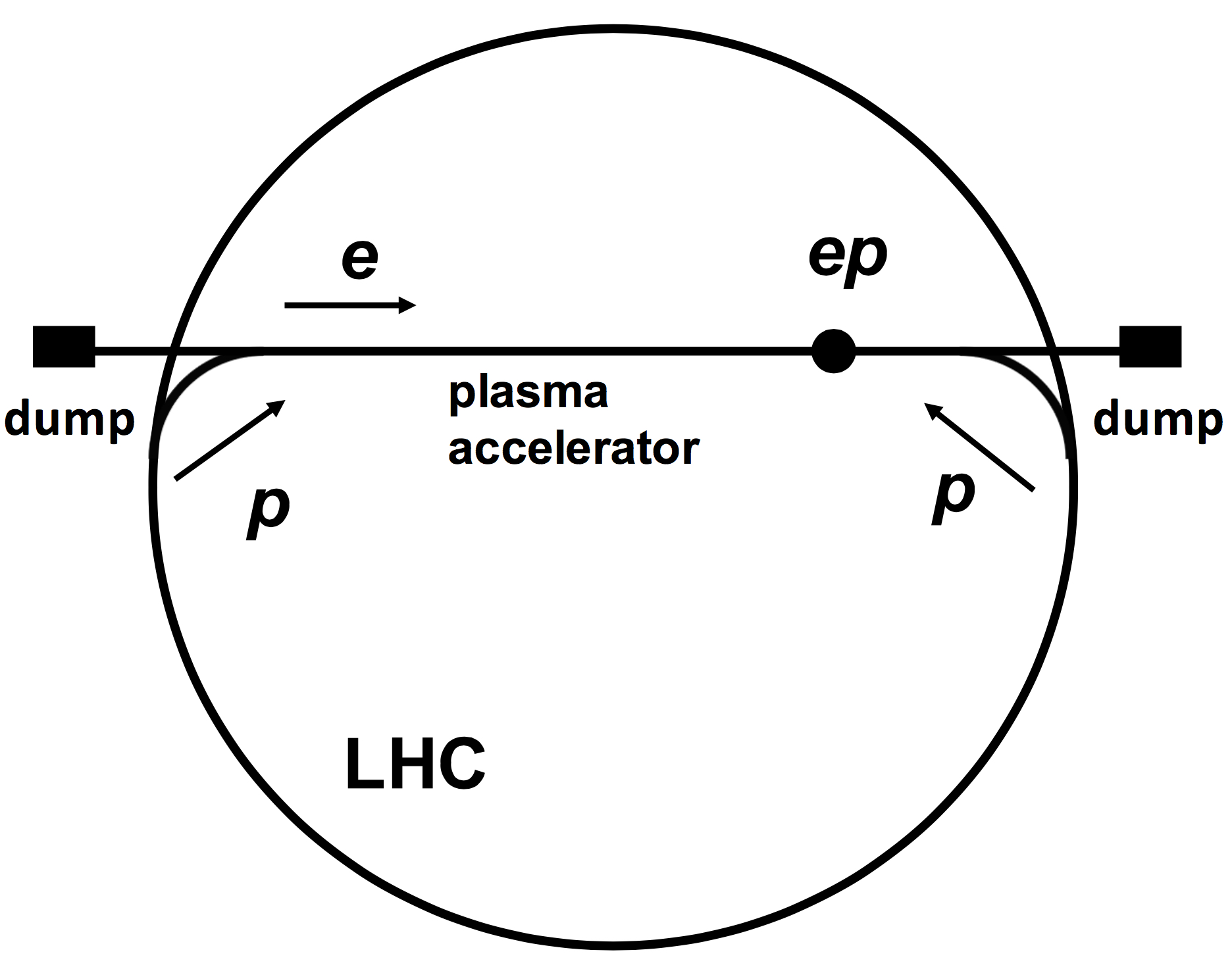Applications of proton-driven plasma wakefield acceleration
VHEeP
Based on current CERN infrastructure, an electron-proton collider is proposed at a centre-of-mass energy of about 9 TeV. A 7 TeV LHC bunch is used as the proton driver to create a plasma wakefield which then accelerates electrons to 3 TeV, these then colliding with the other 7 TeV LHC proton beam. Although of very high energy, the collider has a modest projected integrated luminosity of 10-100 pb-1. For such a collider, with a centre-of-mass energy 30 times greater than HERA, parton momentum fractions, x, down to about 10-8 are accessible for photon virtualities, Q2, of 1 GeV2. The energy dependence of hadronic cross sections at high energies, such as the the total photon-proton cross section, which has synergy with cosmic-ray physics, can be measured and QCD and the structure of matter better understood in a region where the effects are completely unknown. Searches at high Q2 for physics beyond the Standard Model will be possible, in particular the significantly increased sensitivity to the production of leptoquarks. This provides an exciting physics opportunity based on the AWAKE scheme of proton-driven plasma wakefield acceleration and will be pursued further.

A description of VHEeP and its potential is given in the publication here.
Beam-dump and fixed-target experiments
The hidden sector, which couples very weakly to ordinary matter, could provide the answer to dark matter and other puzzles in particle physics. Particles, such as dark photons, which belong to this proposed family of particles can be searched for using beam-dump experiments in which electrons are fired into a target and specific signatures are looked for. In particular, the NA64 experiment at CERN is looking for dark photons using a high energy electron beam.
Assuming that the AWAKE scheme will be a proven technology in which electrons can be accelerated up to O(50 GeV) in about 50 m of plasma using the SPS proton bunches, one could conceive an upgrade to the NA64 programme in which the AWAKE acceleration scheme provides a factor of 1,000 times more electrons on target. This would provide a corresponding extra reach in the search for dark photons.
Other applications of a high-energy electron beam are to use them for fixed-target experiments to measure deep inelastic scattering. Possible motivations would be to consider improved measurements at the very highest parton momentum fractions, x, which would provide valuable input to searches and physics at the LHC. One could also consider polarised targets to investigate the spin structure of the proton and/or different targets to gain a deeper understanding of the structure of matter.
The first ideas for these experiments were given in a talk at the Physics Beyond Colliders workshop at CERN and can be found here.
